In the few short years since hemp was legalized, farming methods have grown leaps and bounds. As we continue to learn more about hemp cultivation, growers are constantly refining their practices. Within the process of learning, there has been a consistent debate over the best means for starting a hemp crop.
When speaking with hemp farmers, it becomes quickly apparent that people have differing opinions concerning clones and seed starts. Most notably, some growers swear by clones, while others will only grow from seed starts. Each school of thought has its own proponents and critics.
At High Grade Hemp Seed, we want to present you with the full picture of the clone and seed start debate. While we are strong proponents of hemp seed starts, we believe it is valuable to explore each side of the story.
Hemp Seeds, Genetics, and Plant Sexes
It’s best to start this exploration by first introducing hemp seeds, genetics, and plant sexes. This will give us solid context to view the clones vs. seeds debate.
In cultivation circles, the term “genetics” is used to describe the unique traits of a particular hemp strain. These expressions are shown in such defining characteristics such as plant structure, terpene profile, cannabinoid content, flowering periods, and rate of growth. As the legal hemp industry continues to mature, breeders like High Grade Hemp Seed continually produce new genetics.
When a hemp breeder develops a new strain, the seeds contain a specific genetic profile. Importantly, hemp farmers are always searching for those strains that are a good fit for their farming methods. It’s generally agreed that plants grown from seed have the potential to produce better than those grown from other methods.
The final point to consider is that only female hemp plants produce CBD-rich flowers. As such, hemp farmers must be careful to only acquire seeds, seed starts, and clones that are “feminized.” In doing so, they ensure their crops are almost 100% certain to be females.
What are Hemp Seed Starts?
In the plainest of terms, hemp seed starts are baby plants that have recently sprouted. Seed starts are invaluable to farmers because they save on time and materials needed to sprout seeds. Even more, reputable sources such as High Grade Hemp Seed provide feminized seed starts. With these quality strains, you can count on your plants being female.
Besides logistical conveniences, there are several reasons why growers favor seed starts above other methods. A big selling point of seed starts is the fact that they come pathogen-free. Even more, if you get your seed starts from a company like High Grade Hemp Seed, you can trust they are robust and ready to be transplanted to the field.
All things considered, hemp seed starts afford a highly reliable way to start a growing season at a commercial farm.
What are Hemp Clones?
Hemp plant clones are exactly what they sound like. They are exact genetic replicas of a single hemp plant. Oftentimes, growers will find genetics they like and keep what is referred to as a “mother plant” of a particular strain. To create clones, you cut branches 5-8 inches in length off of the mother plant. Once cut, the fresh end of the clone is dipped in a “rooting hormone.” The clones are then placed in an environment that promotes vegetative plant growth – where they eventually grow roots.
People enjoy growing hemp from clones as the practice is predictable concerning both genetics and plant sex. Oftentimes, farmers find a hemp strain that does well at their operation, so they keep a mother plant to retain the genetics. Growers also favor clones because the process allows them to operate independently of a seed supplier.
What is Better: Hemp Clones or Hemp Seed Starts?
The process of deciding hemp seeds or clones is complicated. Oftentimes, your preference will boil down to your approach to hemp cultivation.
If you are a hobbyist grower who is only looking to cultivate a few CBD plants in your backyard, cloning could be the way to go. Using the cloning process, you can keep a single mother plant and not worry about getting new genetics with every crop. For personal use, clones provide neat, self-contained production.
When compared to home growers, commercial hemp farmers face entirely new sets of challenges. When you base your livelihood on a hemp crop, you should take every precaution possible to ensure success. Importantly, on a commercial scale, the slightest issues with genetic abnormalities or pathogens can have devastating effects. Reasons such as this make a very strong case for using hemp seed starts.
Most professional growers agree that plants grown from seed are capable of producing more than those started as clones. Even more, hemp plants that are started as seeds produce “tap roots.” Importantly, organic gardening experts tell us “a tap root acts as an anchor for the plant which aids in better support and water and nutrient uptake.” Many professional outdoor growers lean towards seed starts for this very reason. Finally, growing hemp from seed removes any chance of inheriting pests and diseases from a mother plant.
A final point to consider when choosing between seed starts and clones has to do with a phenomenon known as “genetic drift.” This term refers to the tendency for clones to lose their vitality after several rounds of cloning. While the DNA of a clone will always match that of the mother plant, hemp clones can eventually weaken if the mother plant is not properly cared for. Taking clones from a weak mother plant will lead to a subpar crop.
Quality Seed Starts from High Grade Hemp Seed
High Grade Hemp Seed is well aware of how competitive the commercial hemp industry has become. As such, we always advise our clients to take every step they can to ensure bountiful harvests. This process includes starting your hemp farm from seeds or seed starts, as opposed to clones. In the end, hemp plants grown from seeds have a much better chance of enduring the environmental rigors of commercial production.
High Grade Hemp Seed has a wide selection of hemp cultivars that are available as seed starts. Not only are our genetics robust enough to withstand outdoor growth, but they are also feminized within a 99.8% certainty. Strains such as Matterhorn, Berry Blossom, Red Bordeaux, Merlot, and Trophy Wife will get your farm up and running with a competitive advantage. Contact us so we can get your operation started with the best seed starts around.
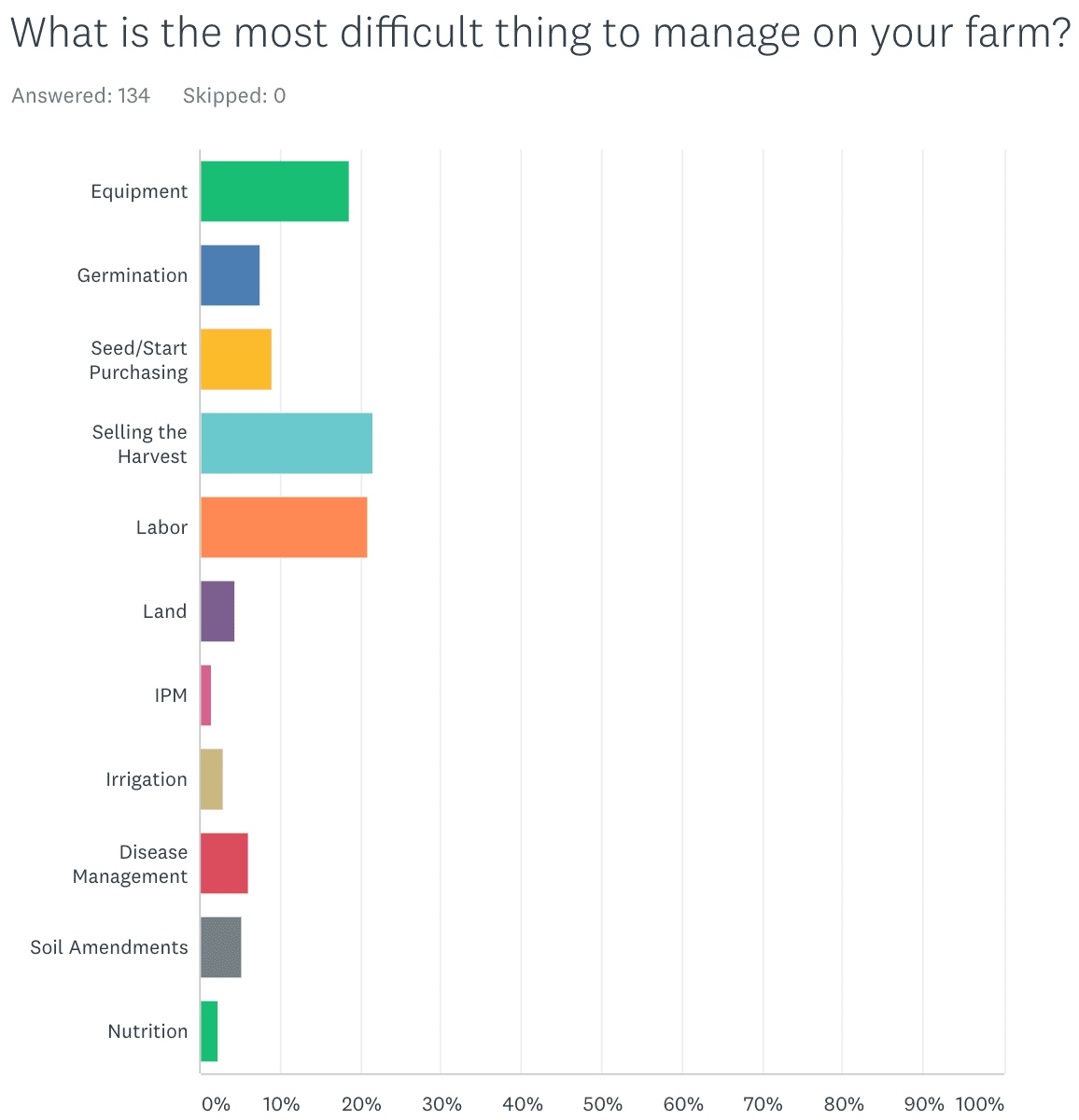 Though these responses included farmers of every stripe, selling the harvest and managing labor are two challenges we hear about a lot in the hemp community. Hemp was only broadly legalized in the 2018 Farm Bill, so the selling infrastructure is being built while farmers are learning how to grow hemp in their fields. Currently, there are no hemp silos where farmers can drop off their crops. Take a look at one of our latest blog posts about
Though these responses included farmers of every stripe, selling the harvest and managing labor are two challenges we hear about a lot in the hemp community. Hemp was only broadly legalized in the 2018 Farm Bill, so the selling infrastructure is being built while farmers are learning how to grow hemp in their fields. Currently, there are no hemp silos where farmers can drop off their crops. Take a look at one of our latest blog posts about 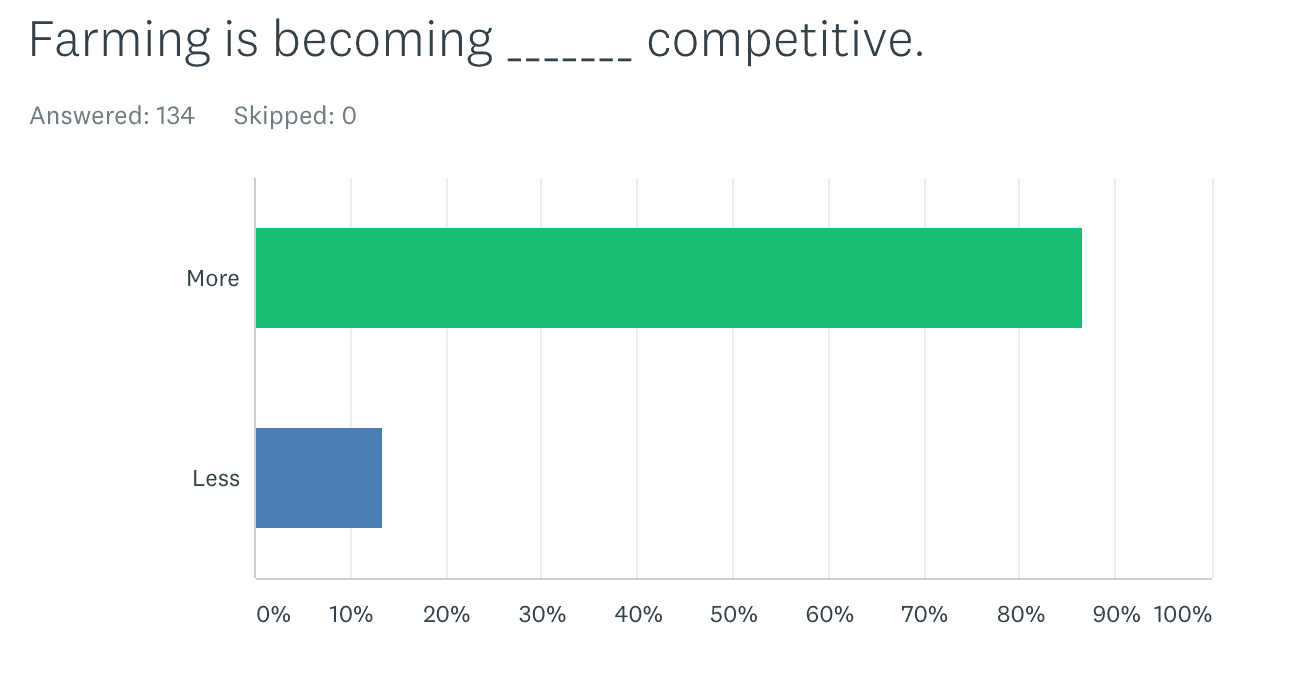
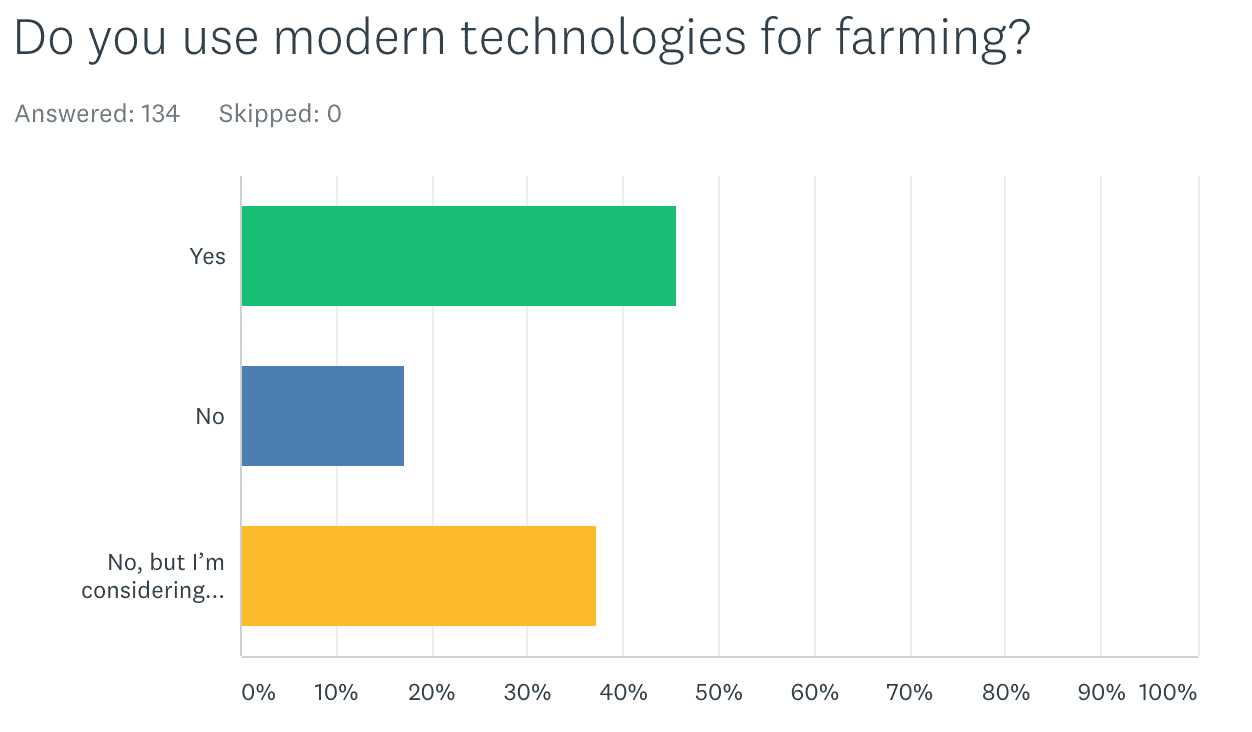
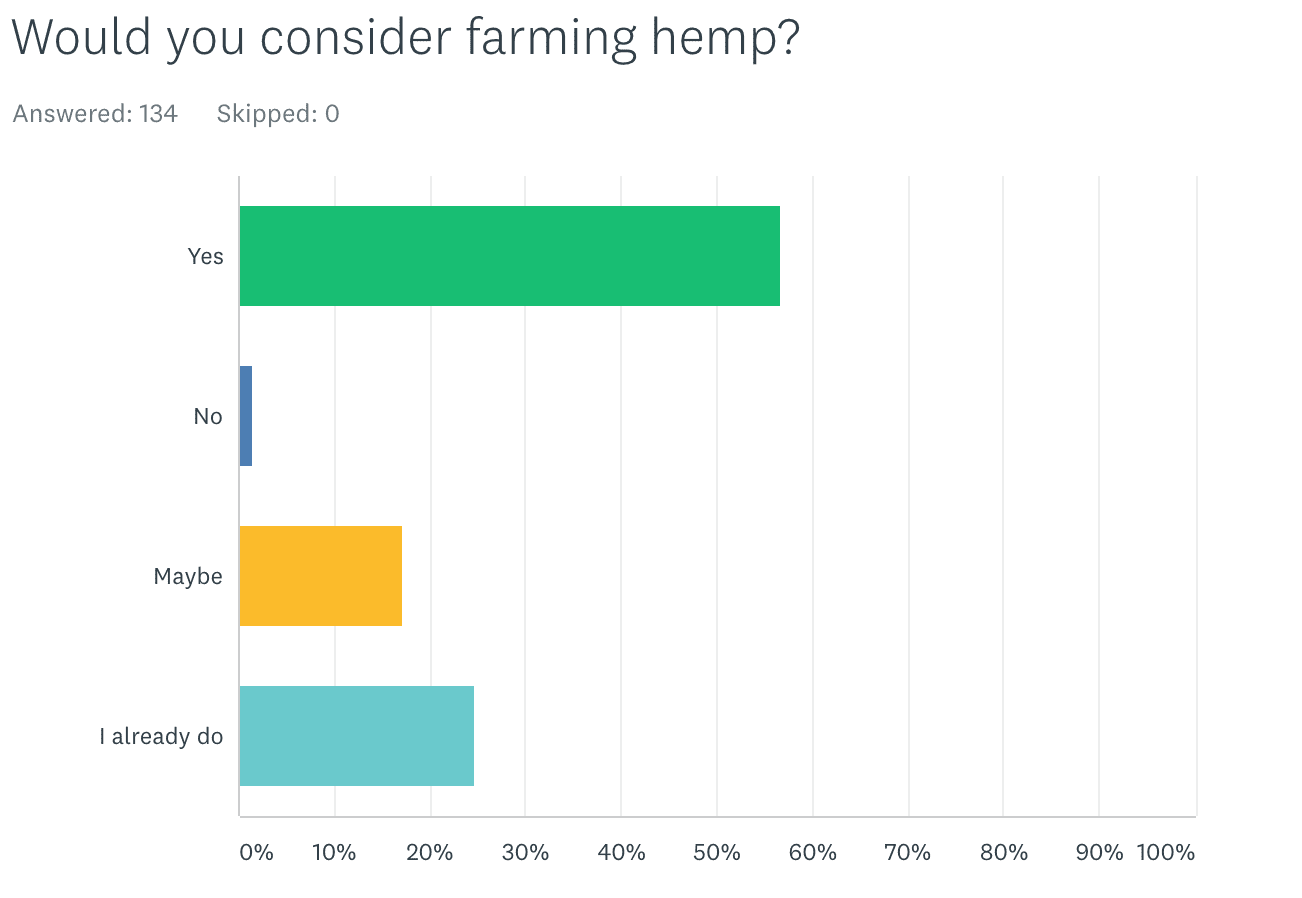
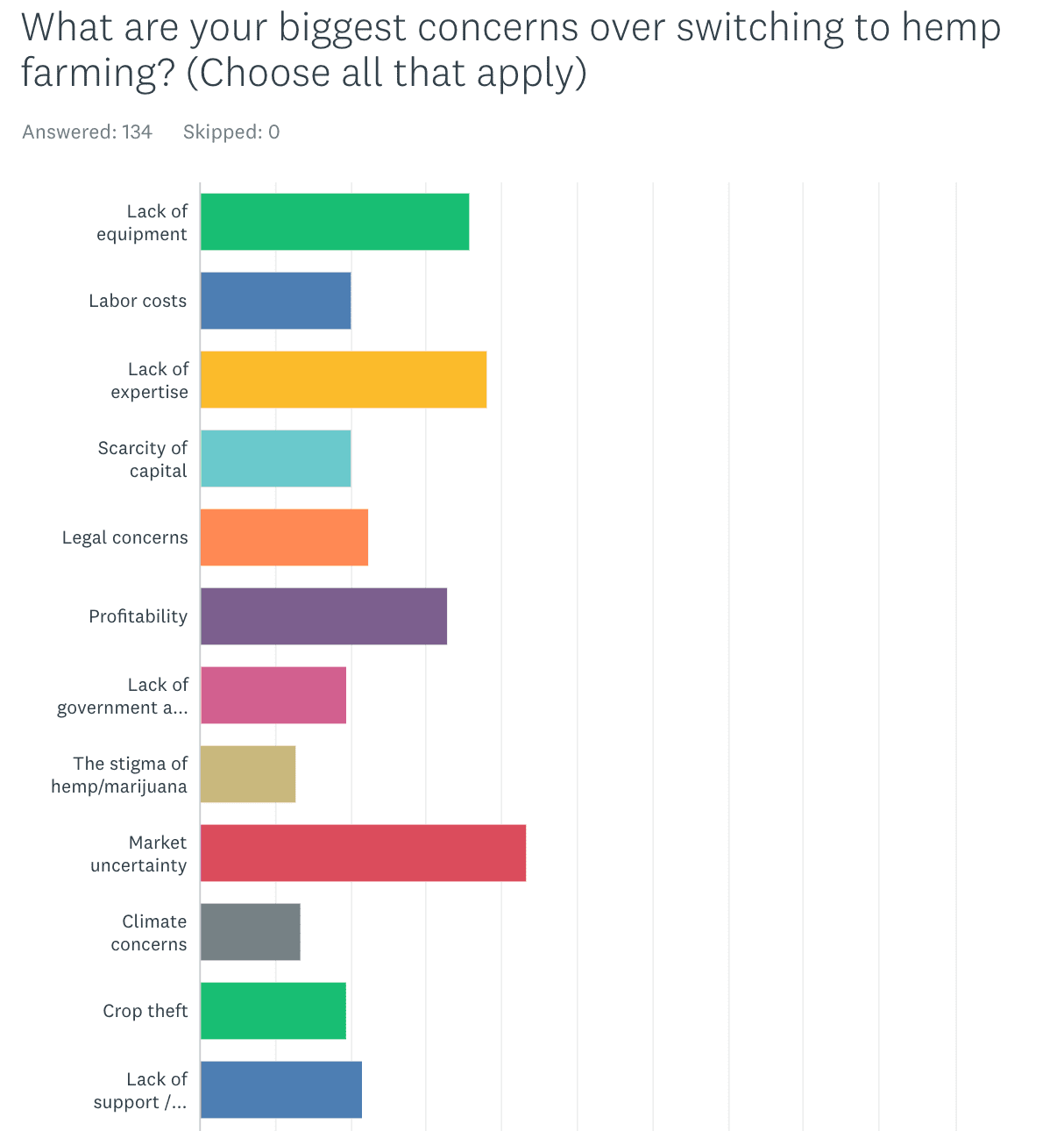 Two other major concerns our survey respondents noted was a lack of equipment and expertise. Many hemp farmers are still learning how to adapt their farming equipment to use on hemp (for reference, we actually wrote an entire article on
Two other major concerns our survey respondents noted was a lack of equipment and expertise. Many hemp farmers are still learning how to adapt their farming equipment to use on hemp (for reference, we actually wrote an entire article on 